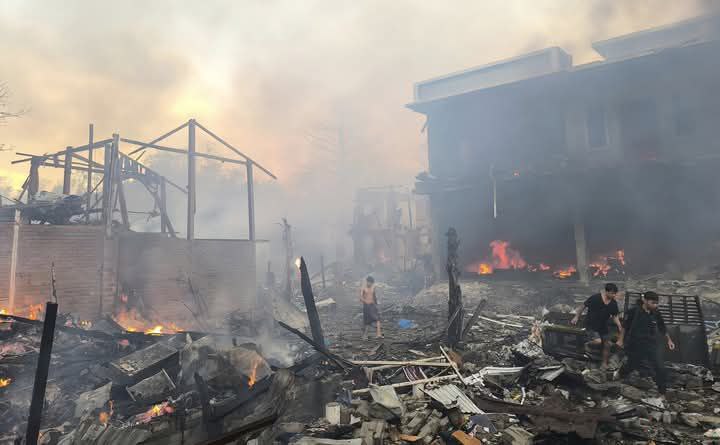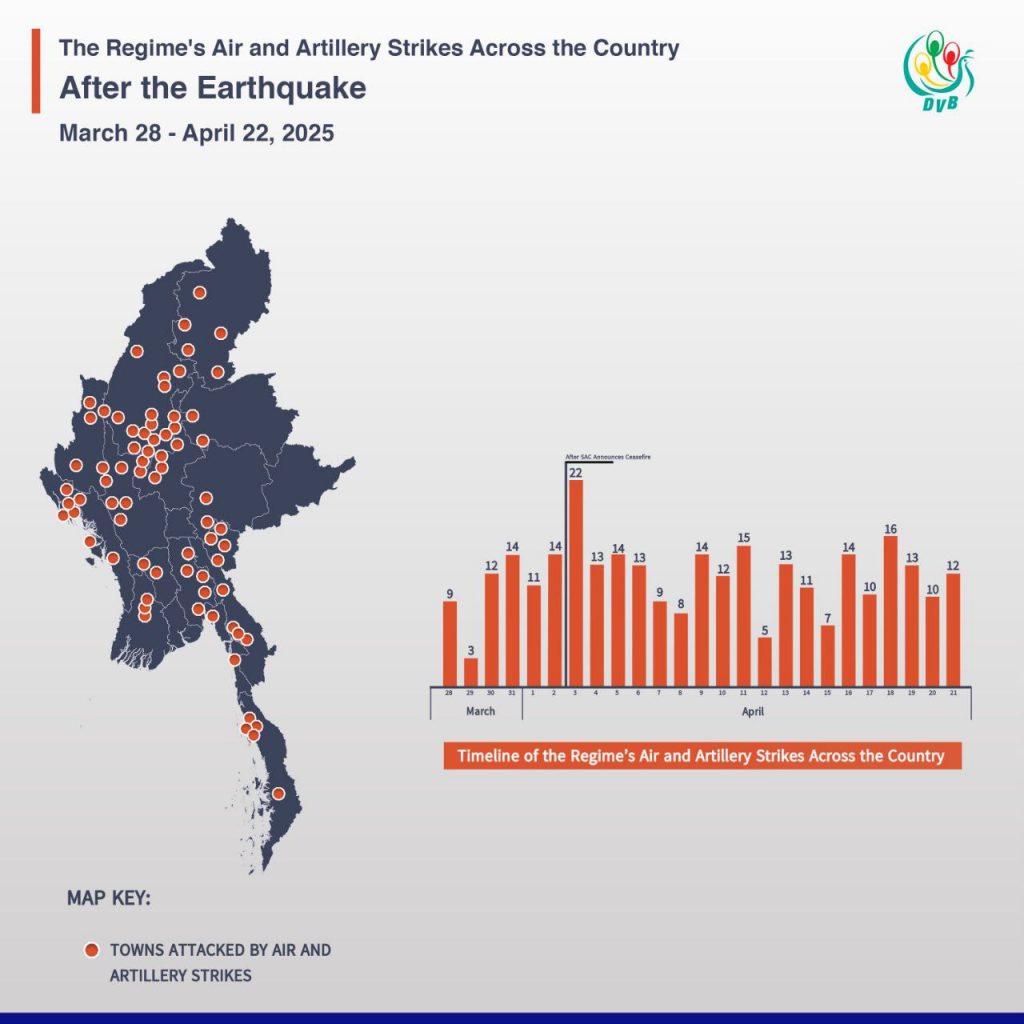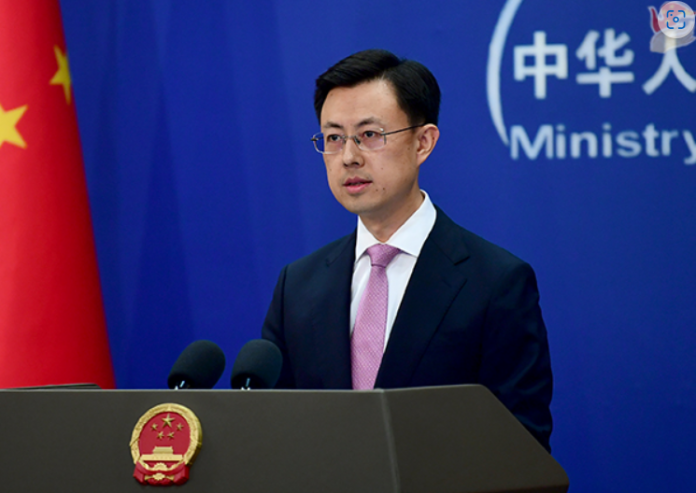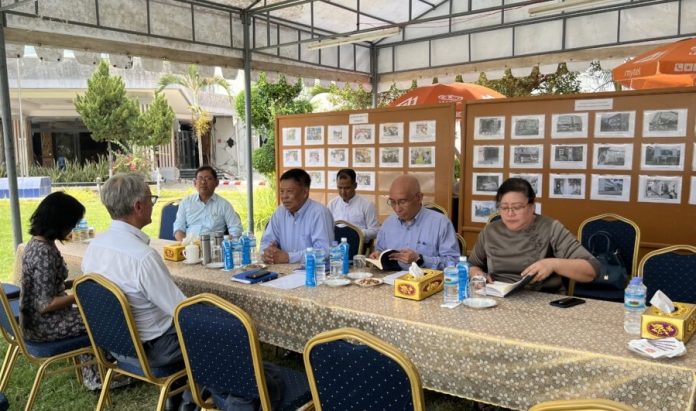Lashio returned to Naypyidaw control under Beijing mediation
Regime troops entered Lashio Township, northern Shan State, on Tuesday, according to Lashio residents. It was the final day the Myanmar National Democratic Alliance Army (MNDAA) was scheduled to hand back control of the town to Naypyidaw as part of a China-brokered ceasefire agreement reached on Jan. 18.
“The [MNDAA] flags have been taken down in the town,” a Lashio resident told DVB on the condition of anonymity. Both MNDAA and regime personnel are now in Lashio, located 107 miles (172 km) south of the Burma-China border town of Muse and 243 miles (391 km) north of the Shan State capital Taunggyi.
A source close to the MNDAA told DVB that China’s consular office in Lashio will mediate. Chinese Special Envoy Deng Xijun is reportedly in the town to “ensure the ceasefire agreement is implemented.” Beijing reiterated that it continues to follow its policy of “non-interference” during a press conference on April 21. The regime will control Lashio town while the MNDAA will administer the outskirts, sources told DVB.
Prisoners in Kachin State allegedly armed by regime
The regime has allegedly armed inmates and set up defensive posts at Bhamo Prison in Bhamo Township in Kachin State, a family member of a prisoner told DVB. Bhamo is located 120 miles (193 km) south of the Kachin State capital Myitkyina and 58 miles (93 km) southwest of Laiza, the Kachin Independence Army (KIA) headquarters.
“It’s not clear if the armed prisoners have permission to shoot,” the source told DVB on the condition of anonymity, adding that the prison authorities did not arm political prisoners. The KIA and allied resistance forces have surrounded the Military Operations Command (MOC) 21, which is located near the Bhamo Prison.
Families of inmates told DVB that they have been denied visitation over the past six months. The regime released 378 political prisoners under its amnesty on April 17. None were reportedly released from Bhamo Prison, according to the Political Prisoners Network Myanmar (PPNM). The KIA announced a 20-day ceasefire April 2-22. It launched its offensive in southern Kachin on Dec. 4.
Over 60,000 students to retake matriculation exams
More than 60,000 students in regions hardest hit by the March 28 earthquake; Mandalay, Sagaing and Naypyidaw will retake matriculation exams June 16-21, the regime Department of Myanmar Examinations announced on Tuesday. Students who want to retake the exam need to collect exam admission cards at their designated exam centers June 1-15.
“There will be 19 exam centers at schools across Mandalay,” an education official from Mandalay told DVB on the condition of anonymity. Students from Sagaing will have to retake their exams at Sagaing Education Degree College. In Naypyidaw, 10 schools will reopen for the exams.
The regime’s Ministry of Education announced that 400,000 exam papers from the 2025 matriculation exams, which were written by 62,954 students from Mandalay, Sagaing, Naypyidaw and Kachin State, were destroyed in a fire at Mandalay University caused by the earthquake on March 28.
News by Region

MANDALAY—A motorized paraglider attack killed three civilians, including a nine-year-old, and injured at least five others in Thanbo village of Taungtha Township on Monday. A People’s Defence Force (PDF) member told DVB there was no fighting with regime forces.
An airstrike was carried out Sunday on Yayhtwak village in Thabeikkyin Township. No casualties were reported but an airstrike on Saturday killed at least 24 civilians and injured 20. “Thabeikkyin has been targeted by at least 14 airstrikes this month,” the PDF told DVB. Read more.
SAGAING—The Northwestern Regional Military Command (RMC) is being reinforced after Indaw town was seized by resistance forces on April 7, the PDF told DVB. Indaw, located 209 miles (336 km) north of the region’s capital Monywa, is a town that connects Sagaing Region to Kachin State.
The PDF added that 500 militia members from Kanbalu Township and over 400 troops from the Light Infantry Division (LID) 33 in Sagaing Township were dispatched to the Northwestern RMC headquarters. Sagaing and Kanbalu are 68-105 miles (109-169 km) east and north of Monywa.
SHAN—The Danu People’s Liberation Army (DPLA) accused the regime of using “poison gas” on the battlefield near Taunghkam village in Nawnghkio Township on Monday. DPLA members experienced a sudden drop in blood pressure, dizziness, and vomiting following exposure, a spokesperson told DVB.
Taunghkam is located 20 miles (32 km) south of Nawnghkio, which is 96 miles (154 km) south of the region’s capital Lashio and 147 miles (236 km) north of the state capital Taunggyi. Regime forces recaptured Artillery Battalions 206 and 406 in Taunghkam from the Ta’ang National Liberation Army (TNLA) in February after they were seized in August.
(Exchange rate: $1 USD = 4,410 MMK)












